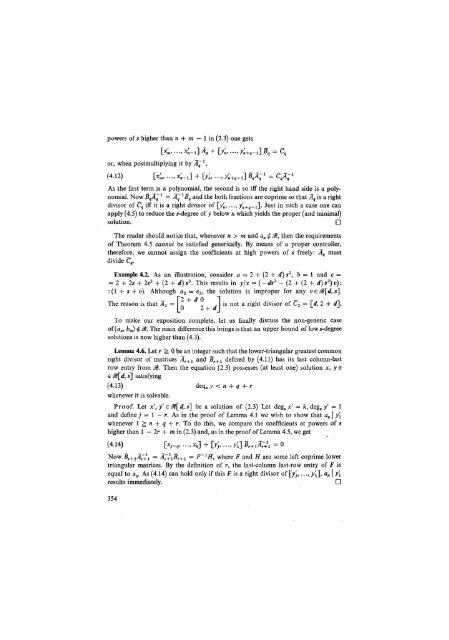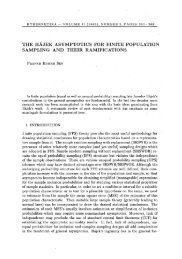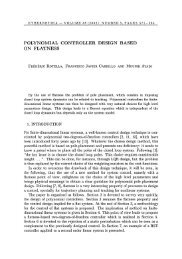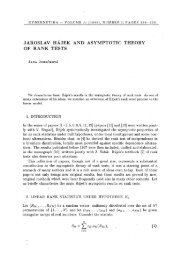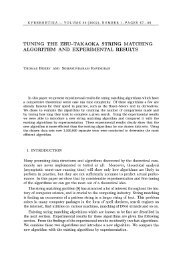characteristic polynomial assignment for delay ... - Kybernetika
characteristic polynomial assignment for delay ... - Kybernetika
characteristic polynomial assignment for delay ... - Kybernetika
Create successful ePaper yourself
Turn your PDF publications into a flip-book with our unique Google optimized e-Paper software.
powers of s higher than n + m — 1 in (2.3) one gets<br />
or, when postmultiplying it by A" 1 ,<br />
[x' m ,..., x'„_ 1 '] A q + [y' n ,..., y; + ,_i] E q = C q<br />
(4.12) [x' m ,..., xU] + [y' n ,..., y' n+i _{\ B q l~ q<br />
l<br />
= C& 1<br />
As the first term is a <strong>polynomial</strong>, the second is so iff the right hand side is a <strong>polynomial</strong>.<br />
Now B q A~ % = A~ l B q and the both fractions are coprime so that A q is a right<br />
divisor of C q iff it is a right divisor of [y' n ,..., y' n+q -\\. Just in such a case one can<br />
apply (4.5) to reduce the s-degree of y below n which yields the proper (and minimal)<br />
solution.<br />
D<br />
The reader should notice that, whenever n > m and a„ g 3%, then the requirements<br />
of Theorem 4.5 cannot be satisfied generically. By means of a proper controller,<br />
there<strong>for</strong>e, we cannot assign the coefficients at high powers of s freely: A q must<br />
divide C q .<br />
Example 4.2. As an illustration, consider a = 2 + (2 + d) s z , b = 1 and c =<br />
= 2 + 2s + 2s 2 + (2 + d) s 3 . This results in yjx = (-ds 2 - (2 + (2 + d) s 2 ) v):<br />
: (1 + s + v). Although a 2 = c 3 , the solution is improper <strong>for</strong> any v e (%[d, s].<br />
The reason is that A 2 = is not a right divisor of C 2 = [d, 2 + «/].<br />
To make our exposition complete, let us finally discuss the non-generic case<br />
of (a„, b m ) 4 8i- The main difference this brings is that an upper bound of low s-degree<br />
solutions is now higher than (4.3).<br />
Lemma 4.6. Let r _ 0 be an integer such that the lower-triangular greatest common<br />
right divisor of matrices A r+1 and B r+1 defined by (4.H) has its last column-last<br />
row entry from ^. Then the equation (2.3) possesses (at least one) solution x, ye<br />
e 8t[d, s] satisfying<br />
(4.13) deq s y < n + q + r<br />
whenever it is solvable.<br />
Proof. Let x', y' e 0i[d, s] be a solution of (2.3) Let deg s x' = k, deg, y' = 1<br />
and define j — 1 — r. As in the proof of Lemma 4.1 we wish to show that a„ \ y[<br />
whenever 1 >. n + q + r. To do this, we compare the coefficients at powers of s<br />
higher than 1 — 2r + m in (2.3) and, as in the proof of Lemma 4.5, we get<br />
(4.14) [ Xj - q ,..., x k ] + [y' p ..., ji] B r+ t I; + \ = 0<br />
Now B r+1 A r+1 = A~ +1 B r+1 = F~*H, where F and H are some left coprime lower<br />
triangular matrices. By the definition of r, the last-column last-row entry of F is<br />
equal to a„. As (4.14) can hold only if this F is a right divisor of [y' p ..., yi], a„ \ y[<br />
results immediately.<br />
D<br />
354


